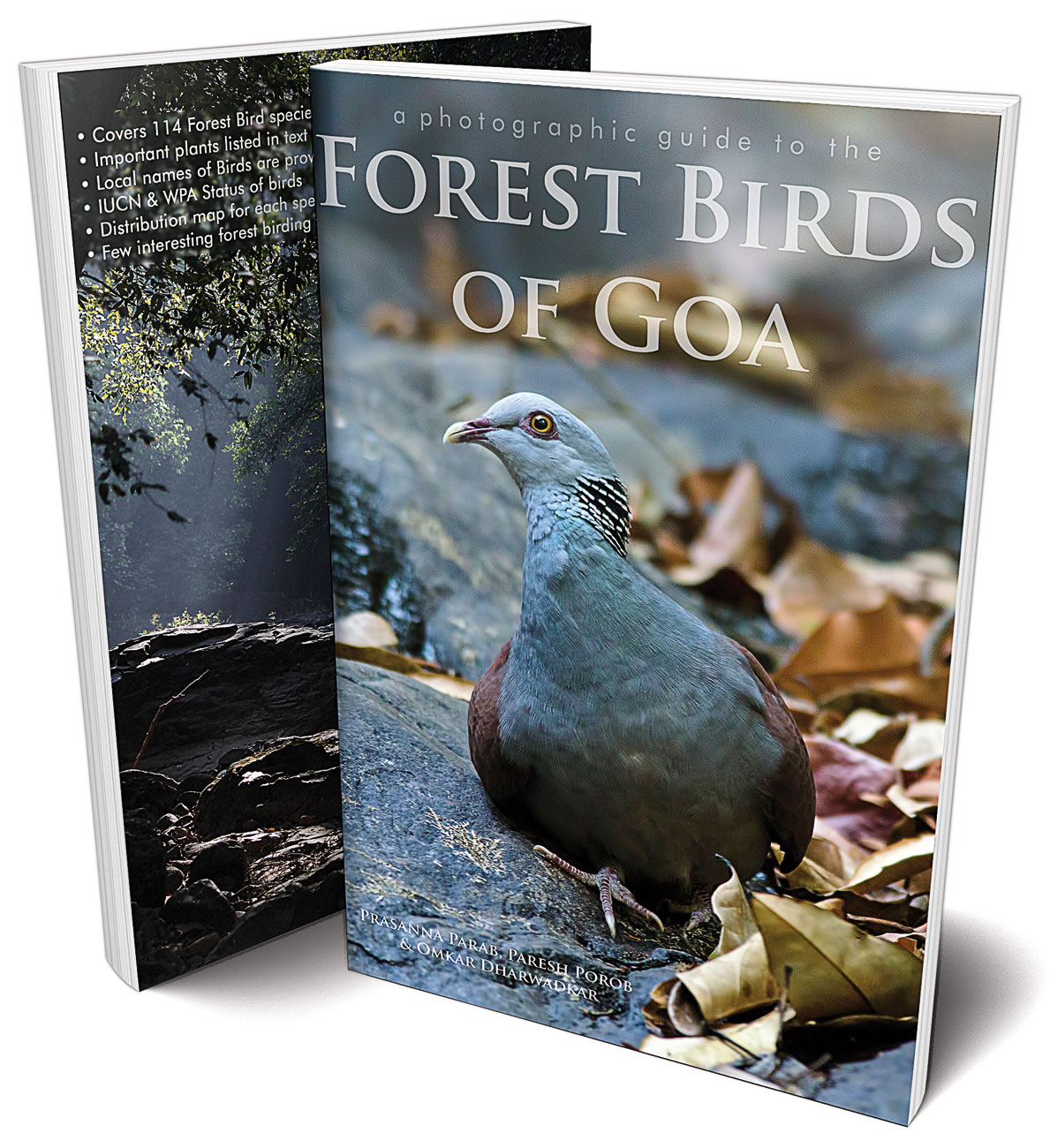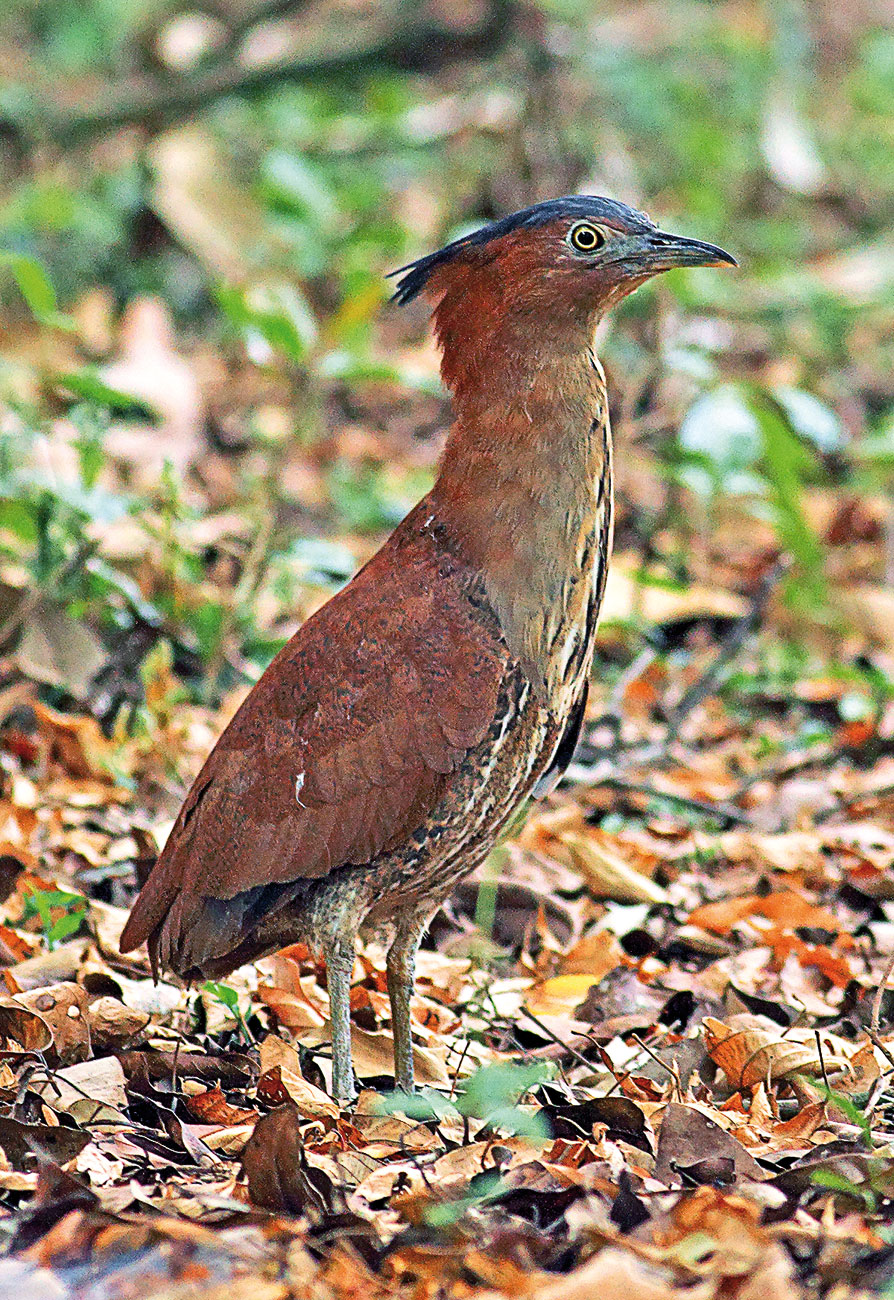Book Review: A Photographic Guide To The Forest Birds Of Goa
First published in Sanctuary Asia,
Vol. 43
No. 4,
April 2023
With improved technology and a much greater appetite among the young for books to remind them of the wonderful biosphere in which they live, it is heartening to see how many new, high-quality publications are emerging from within India. Here are three books that Sanctuary believes should be in every public library and in the homes of all those whose hearts beat to nature’s drum.
A Photographic Guide To The Forest Birds Of Goa
By Prasanna Parab, Co-authors Paresh Porob and Omkar Dharwadkar
Published by PP Publishing
Paperback, 152 pages, Rs. 875/-

For everyone with their nose pointed up in the air or squished down by a pair of binoculars, this photographic guide is a vibrant and information-packed addition to your Goa backpack.
The campaign to protect Goa’s Mollem forest from infrastructural linear projects is still fresh in our minds, and so are the disastrous and distressing fires that ravaged the state in March 2023. The book comes at an opportune moment, giving concerned citizens a solid document on which pleas for protection can be based, and also opens up a treasure trove for the enchanted.
Before diving into bird descriptions, the book spends a thoughtful moment on Goa’s forests. The first page on forest types of Goa is evidence of the deep, first-hand research that was undertaken in creating this book over the past 13 odd years, after it was conceptualised in 2009. I would urge at least a cursory glance at all the ecosystems mentioned here, such as the Myristica swamps, so that the next time you are out scouring the terrain for birds, you can also appreciate the surroundings.
By beginning with forest types and then also including the association between each bird and different plants, the authors bring in an ecosystem view for birding. This book is certainly not only about spotting a bird and adding it to a birding list, but identifying the ecosystem it needs. Birds thus become a symbolic species for the much larger goal of conservation through this book. But if such intense science does not float your boat, you can happily jump to the pages dedicated to the centrepiece of the book – 114 forest birds.
These pages are divided into two chunks – non-passerine and passerine birds. Each page has a uniform format that includes the bird’s most used name, scientific name, other common names, its local name, IUCN Red List status, Wildlife (Protection) Act schedule, field characters, habitat and behaviour, and its status in Goa. An original image of each bird shines on the thick, glossy paper, photographed either by the authors or contributors. It is wonderful that the local names are written in the Devanagari script. The morphological description also includes information about whether the sexes are the same or not. The distribution map is valuable too – in case you spot a bird in a completely unexpected area, you could start assessing why it was there in the first place: is the species seeking new habitats? Why? Is the population increasing? And so on.

Photo: Prasanna Parab.
Delightfully, each page has a description of the bird’s song or call. For instance, ‘a soft “chiee” ending with a rapid trill’ of the Ultramarine Flycatcher, or the ‘loud echoing barks “gaark”’ of the Great Hornbill. Just imagining what the bird may sound like gives the 2D book a life-like character.
After the pages dedicated to the forest birds, the book has a list of endemic species, followed by a much-needed bibliography. The book draws to a close with a list of local and scientific names of the plants mentioned throughout the bird description pages. A key list, also at the end, has a helpful collection of forest birding trails.
Most firsts in life are memorable, and so is my first bird book – Sálim Ali’s The Book of Indian Birds. This guide on the forest birds of Goa cannot be used to identify birds, as that tome can be. One will need to find a way to first identify a bird in the field, and then look it up in this guide, to add to their understanding about the species. This book is certainly a valuable resource for the birds of Goa.
And finally, a gorgeous quote by Robert Lynd on the back cover closes out and sets the tone for this book – “In order to see birds, it is necessary to become a part of the silence”.
Reviewed by Shatakshi Gawade



